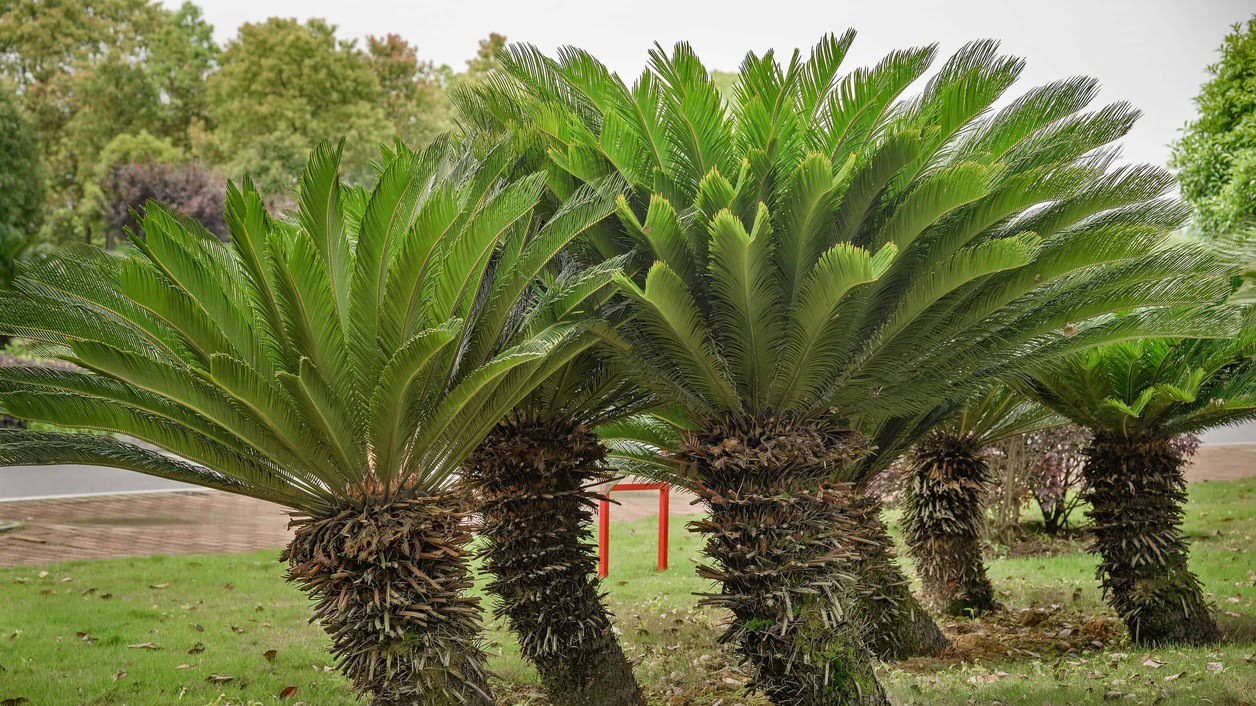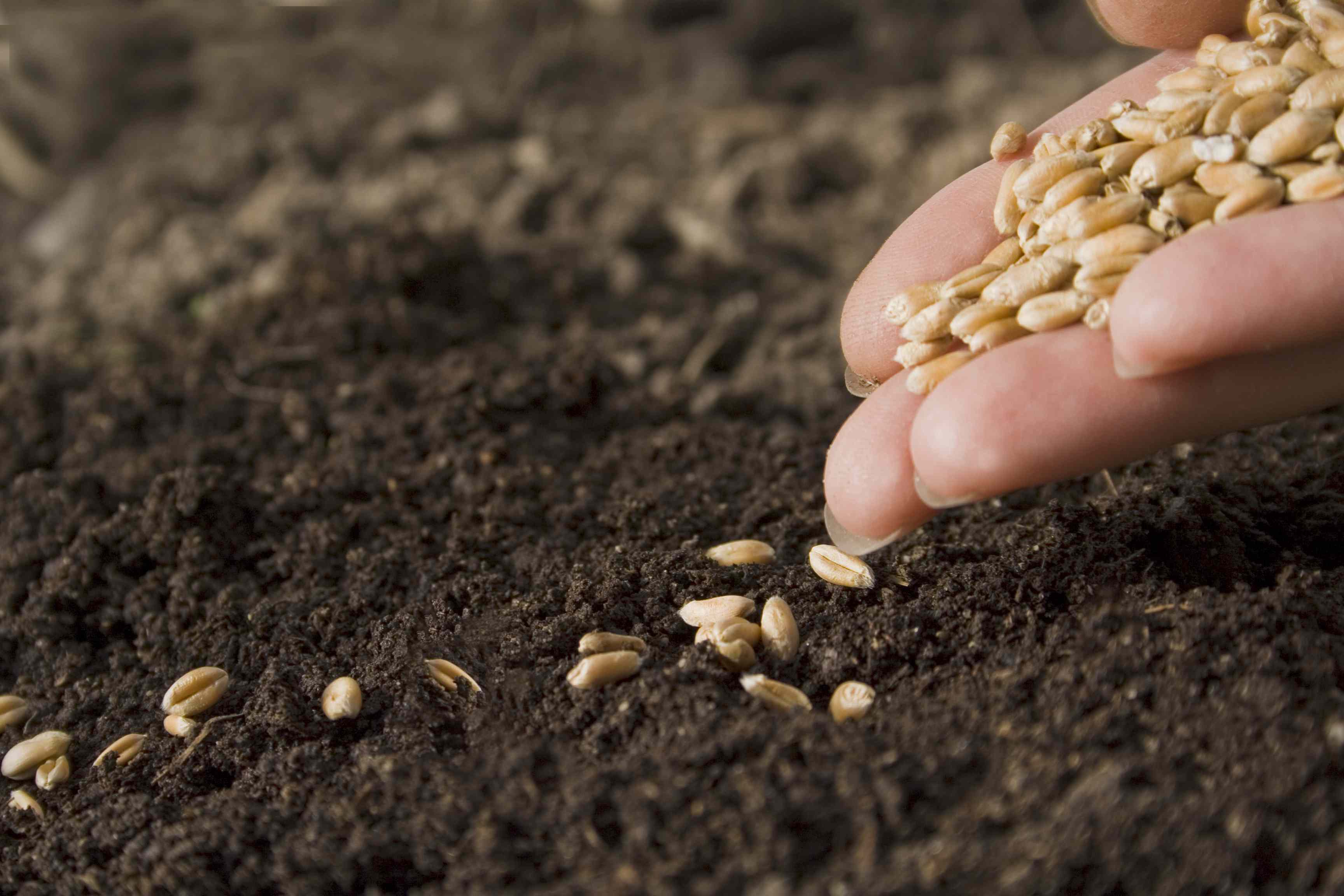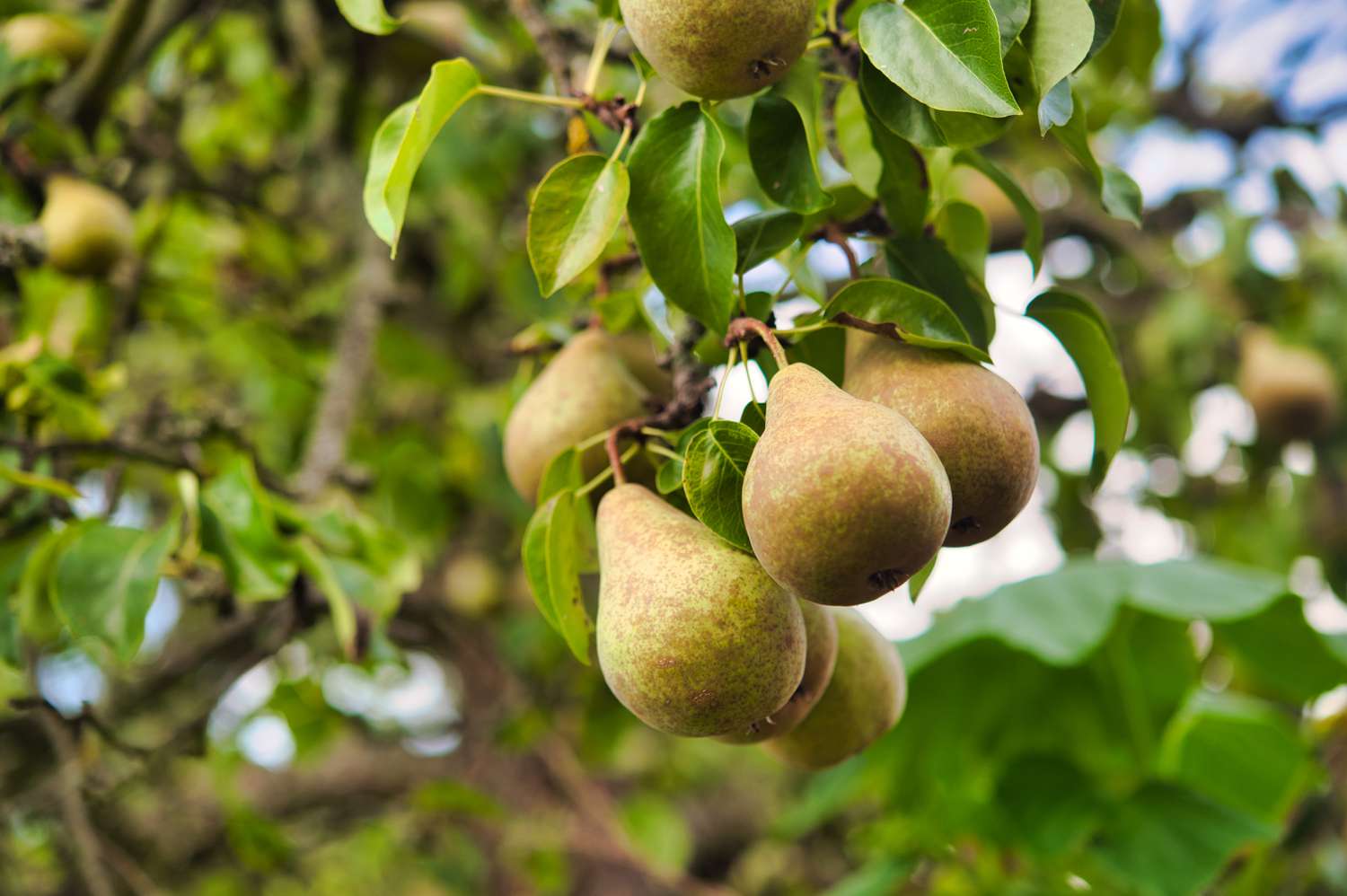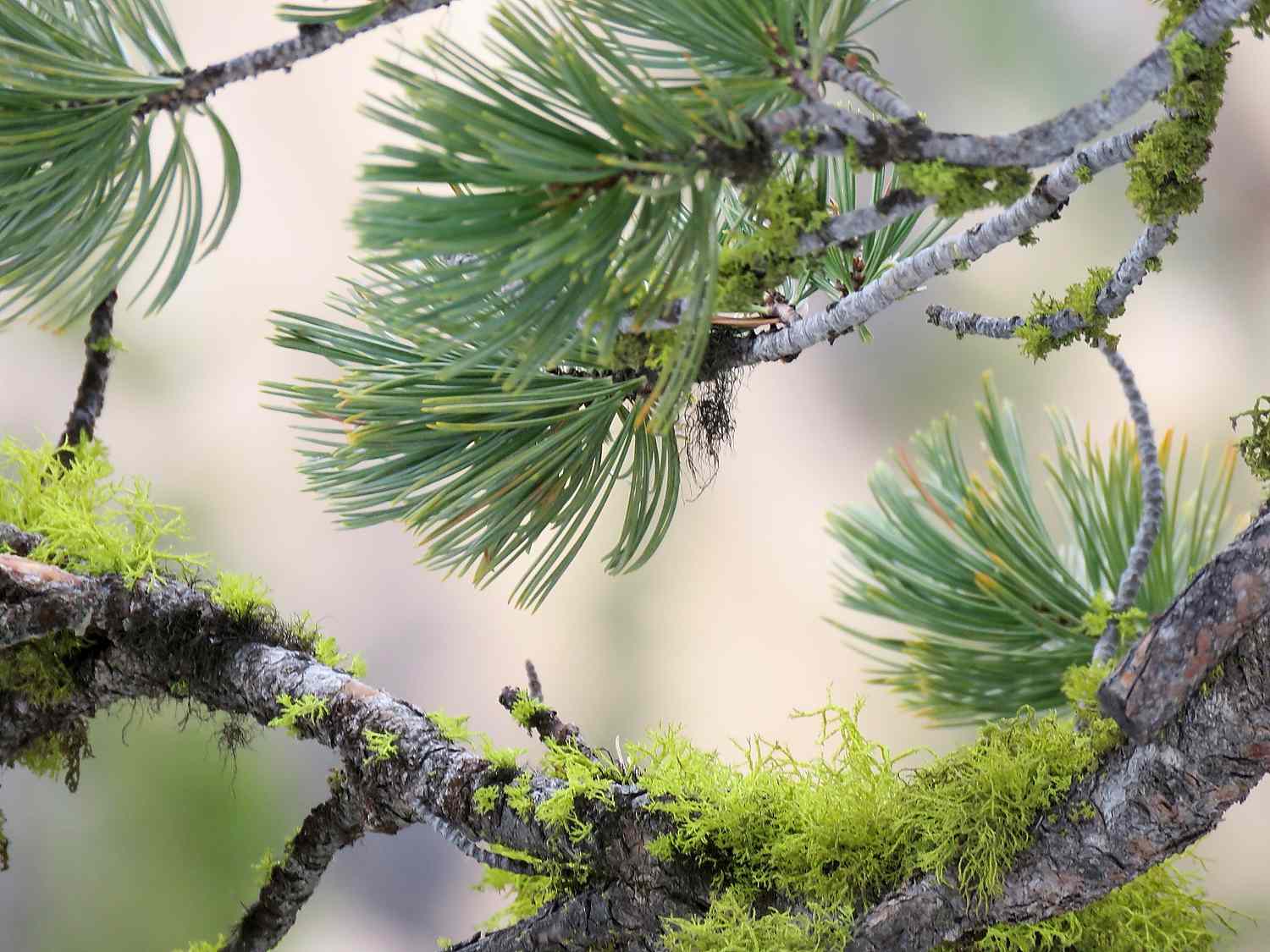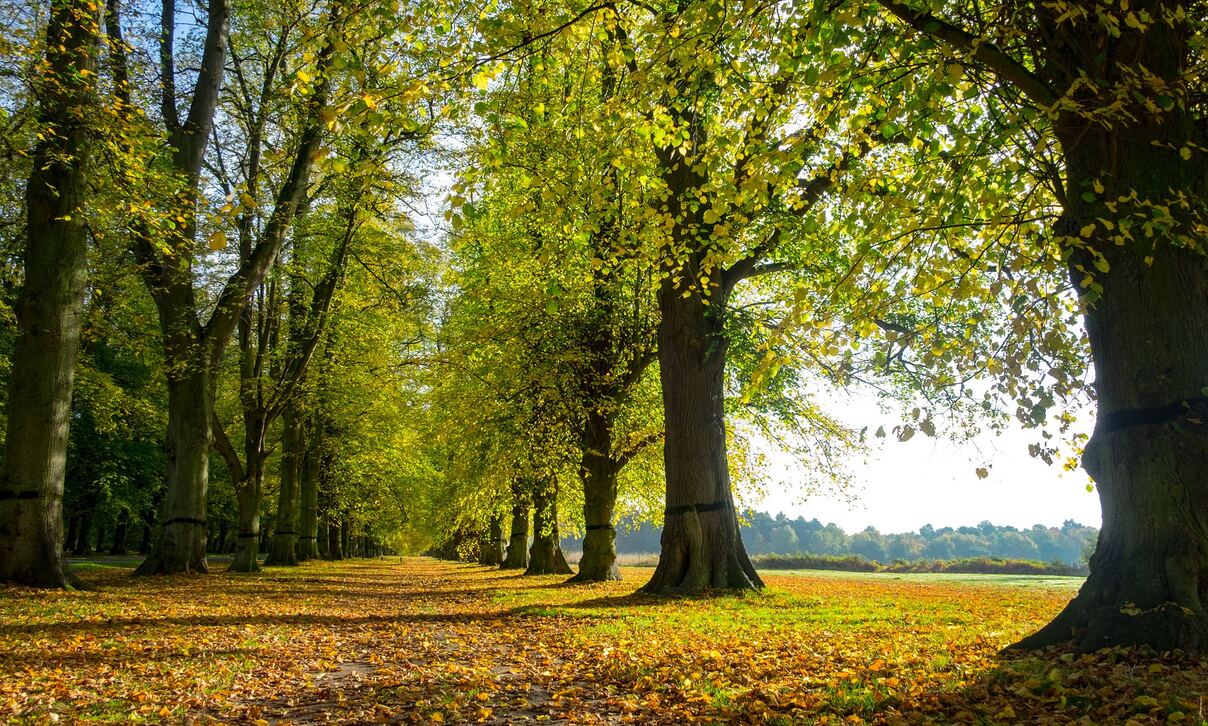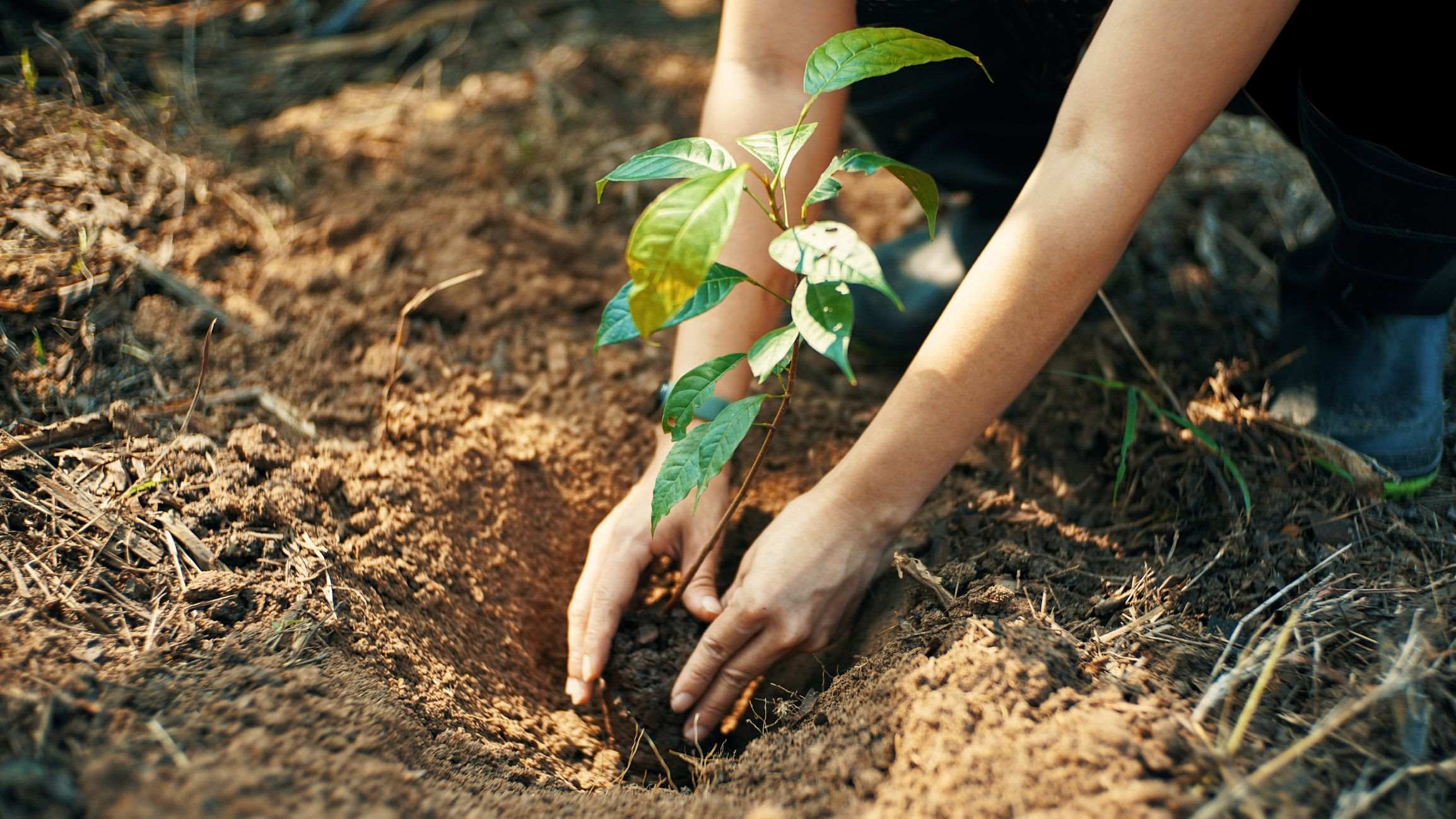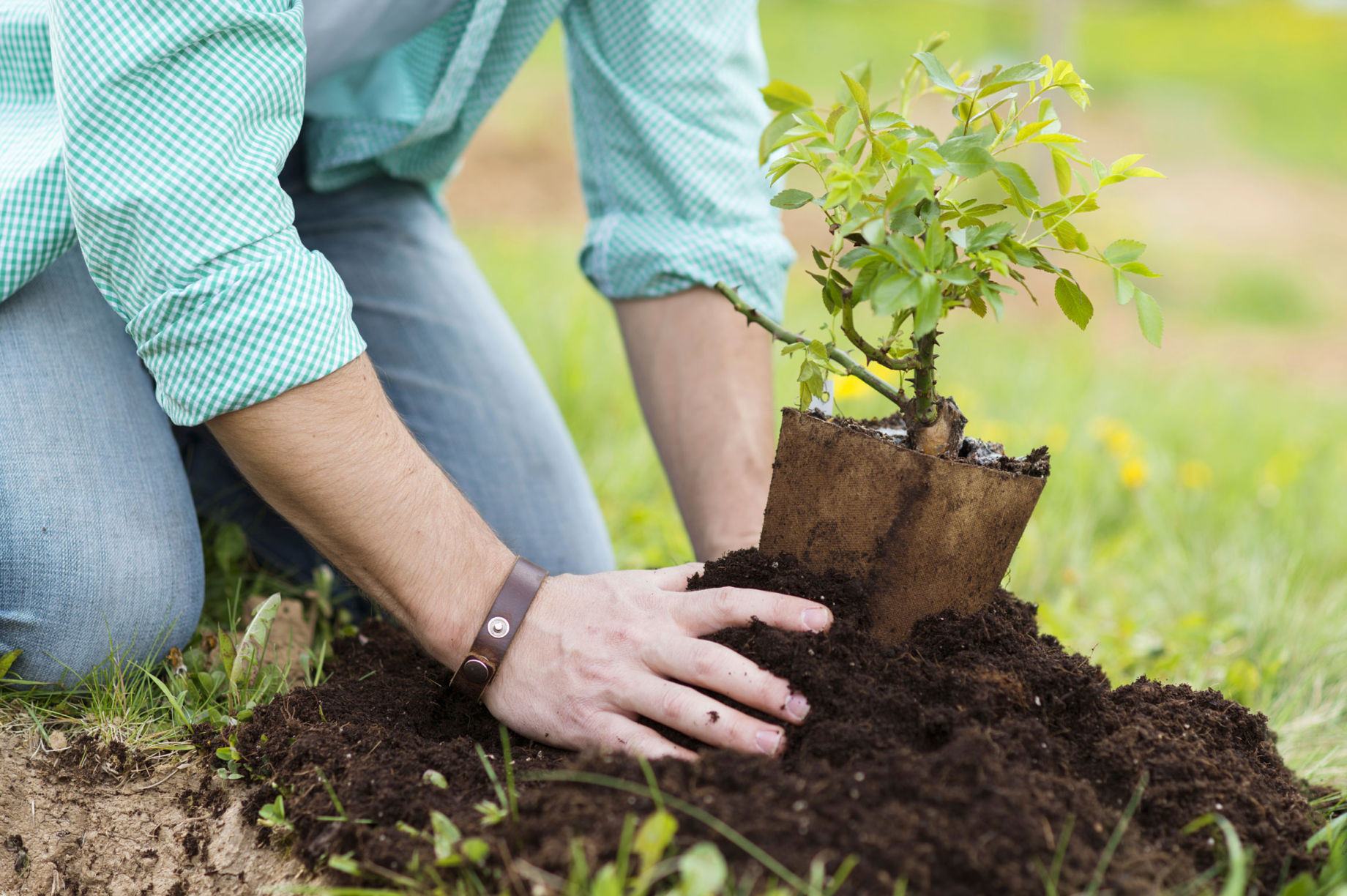Home>Gardening Techniques>Plant Care>How To Plant Pecan Trees
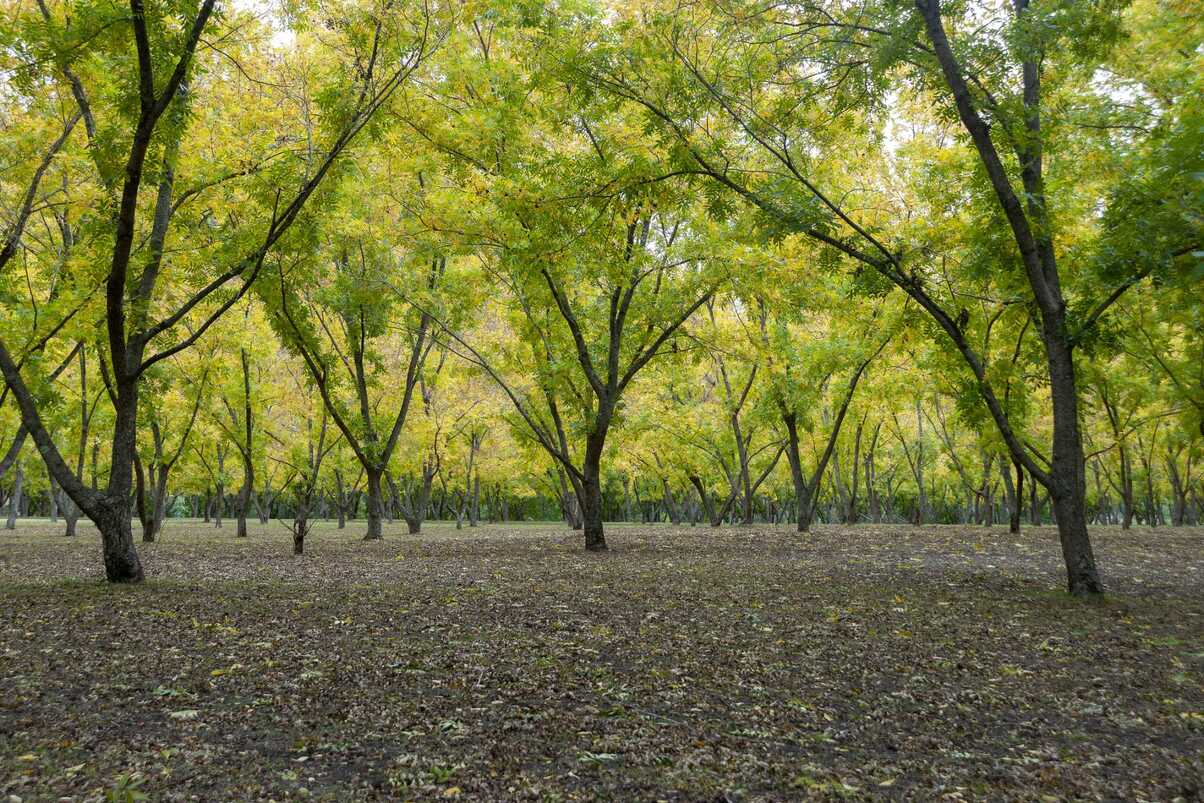

Plant Care
How To Plant Pecan Trees
Modified: January 22, 2024
Learn the essential plant care tips for planting pecan trees. Discover the best techniques and practices to ensure successful growth and a bountiful harvest.
(Many of the links in this article redirect to a specific reviewed product. Your purchase of these products through affiliate links helps to generate commission for Chicagolandgardening.com, at no extra cost. Learn more)
Table of Contents
Introduction
Welcome to the world of pecan trees! Growing your own pecan trees can be a rewarding and fulfilling endeavor, allowing you to enjoy the beauty of these majestic trees and the delicious, nutritious nuts they produce. Whether you’re a seasoned gardener or just starting out, this comprehensive guide will help you navigate the ins and outs of planting and caring for pecan trees.
Pecan trees, scientifically known as Carya illinoinensis, are native to North America and thrive in regions with long, hot summers and mild winters. Known for their large size, sturdy structure, and their ability to produce abundant crops of tasty nuts, pecan trees are a popular choice for both home gardeners and commercial growers.
However, successfully growing pecan trees requires careful planning and consideration. From selecting the right variety to preparing the soil and providing proper care and maintenance, each step plays a crucial role in the tree’s overall health and productivity. Throughout this article, you will find valuable insights and tips to help you become a skilled caretaker of pecan trees.
Whether your goal is to have a beautiful pecan tree as a focal point in your garden or to cultivate a bountiful harvest of pecans for personal consumption or sale, this guide will equip you with the knowledge and techniques necessary to achieve success. So, let’s dive in and get started on your journey to becoming a skilled pecan tree caretaker!
Selecting the Right Pecan Tree Variety
When it comes to pecan trees, there is a wide variety of options to choose from. Selecting the right pecan tree variety is crucial for the success of your planting venture. Factors such as climate, soil type, and desired characteristics of the tree and nuts should all be taken into consideration. Here are some important points to keep in mind when selecting a pecan tree variety:
- Climate suitability: Pecan trees are best suited for regions with long, hot summers and mild winters. If you live in a colder climate, consider choosing a variety that is cold-hardy and can withstand freezing temperatures.
- Tree size: Pecan trees can vary in size, ranging from compact varieties suitable for smaller spaces to large, spreading trees. Consider the available space in your garden and choose a variety that fits well.
- Nut quality and characteristics: Different pecan tree varieties produce nuts with varying shell thickness, kernel size, and flavor. Determine your preference for nut characteristics and choose a variety that aligns with your taste and intended use.
- Pollination requirements: Pecan trees are categorized as either self-pollinating or requiring cross-pollination. If you only have space for one tree, ensure you choose a self-pollinating variety. Otherwise, select compatible varieties that can effectively cross-pollinate with each other.
When deciding on a specific pecan tree variety, it is beneficial to consult with local nursery experts or agricultural extension offices. They can provide valuable recommendations based on your specific location and climate conditions.
Some popular pecan tree varieties that are well-regarded for their overall performance and nut quality include ‘Desirable,’ ‘Pawnee,’ ‘Elliott,’ and ‘Candy.’ However, there are numerous other varieties available, each with its own unique attributes and considerations.
By carefully selecting the right pecan tree variety, you set a strong foundation for a successful planting and growing experience. Take the time to research and choose a variety that best aligns with your specific needs and expectations. Your efforts will be rewarded with a thriving pecan tree that produces the delicious nuts you desire.
Choosing the Ideal Location for Planting
Choosing the right location for planting your pecan tree is essential for its long-term health and productivity. Pecan trees require specific environmental conditions to thrive and produce a bountiful harvest. Consider the following factors when selecting the ideal location:
- Sunlight: Pecan trees need full sun exposure to flourish. Choose a location that receives at least 6 to 8 hours of direct sunlight per day. Avoid planting near tall buildings or large trees that may cast shade and hinder the tree’s sun exposure.
- Soil type: Pecan trees prefer well-drained soil with a pH level between 6.0 and 7.0. Conduct a soil test to determine the soil’s pH and nutrient levels. If the soil is too acidic or alkaline, amendments can be made to adjust the pH to the optimal range.
- Air circulation: Good air circulation is crucial for preventing diseases and ensuring proper pollination. Avoid planting pecan trees in areas with poor air movement or in low-lying areas that may accumulate cold air or frost during winter.
- Space: Pecan trees require ample space to grow and spread their branches. Ensure that there is enough room for the tree to reach its mature size without interfering with structures or other plants. A general rule of thumb is to plant pecan trees at least 50 feet apart.
In addition to these factors, consider any microclimates in your garden that may affect the growth of the pecan tree. For example, areas that are prone to frost pockets or have poor drainage should be avoided. Observing the natural conditions of your garden and selecting a location that mimics the tree’s native habitat will greatly increase its chances of success.
Before planting, it is a good practice to prepare the soil in the chosen location. Remove any weeds or grass and incorporate organic matter, such as compost, into the soil to improve its fertility and drainage. This will provide a favorable environment for the pecan tree’s roots to establish and grow.
By carefully selecting the ideal location with optimal sunlight, well-drained soil, adequate air circulation, and ample space, you lay the groundwork for a thriving pecan tree. Providing the tree with the proper environmental conditions will enable it to flourish and produce a generous harvest of delicious pecans.
Preparing the Soil for Planting
Preparing the soil properly before planting your pecan tree is essential for its long-term growth and productivity. Pecan trees thrive in well-drained soil with good fertility and the right pH level. Follow these steps to prepare the soil for planting:
- Soil testing: Conduct a soil test to determine the pH level and nutrient content of the soil. You can obtain a soil testing kit from a local nursery or contact your agricultural extension office for assistance. The results will provide valuable insights into any necessary soil amendments.
- Adjusting pH: Pecan trees prefer soil with a pH level between 6.0 and 7.0. If the soil test reveals that the pH is too acidic or alkaline, you can amend the soil to bring it within the optimal range. Applying agricultural lime will raise the pH, while sulfur or aluminum sulfate can lower it.
- Improving drainage: Pecan trees require well-drained soil to prevent root rot and other issues. If the soil in your chosen location has poor drainage, consider incorporating organic matter, such as compost or well-rotted manure, to improve soil structure and drainage capabilities.
- Adding nutrients: Pecan trees have specific nutrient requirements for healthy growth. Based on the soil test results, you may need to add fertilizers or soil amendments to ensure adequate nutrient levels. Consult with local experts to determine the appropriate fertilizer and application rate for your specific soil conditions.
- Removing weeds and debris: Before planting your pecan tree, remove any weeds, grass, rocks, or debris from the planting area. Weeds can compete with the tree for nutrients and water, while rocks can impede root growth. Clearing the area will provide a clean slate for the young tree to establish its roots.
Once you have prepared the soil, it’s time to dig the planting hole. Make sure the hole is wide and deep enough to accommodate the tree’s root system, with additional space for backfilling. Gently spread the roots out in the hole and fill it with soil, ensuring that the tree is planted at the same depth it was growing in the nursery.
After planting, apply a layer of organic mulch, such as wood chips or straw, around the base of the tree. Mulch helps in conserving moisture, suppressing weeds, and insulating the soil temperature.
Preparing the soil properly sets the stage for the successful establishment and growth of your pecan tree. By providing the optimal soil conditions, you give the young tree a strong foundation for healthy root development and overall vigor.
Obtaining and Planting Pecan Seedlings
Now that you have prepared the soil, it’s time to obtain and plant your pecan seedlings. Here are the steps to follow for a successful planting:
- Obtaining pecan seedlings: There are a few avenues to obtain pecan seedlings. You can purchase them from local nurseries or garden centers that specialize in fruit trees. Alternatively, you can grow pecan trees from nuts by collecting mature pecans in the fall and following a stratification process. This involves storing the nuts in a cool, moist environment for several months to break their dormancy.
- Planting pecan seedlings: The optimal time to plant pecan seedlings is in late winter or early spring when the soil is workable. Dig a hole large enough to accommodate the root system of the seedling, ensuring that it is planted at the same depth it was growing in the nursery. Gently spread the roots out in the hole and backfill with soil, firming it gently around the base of the tree. Water the newly planted seedling thoroughly.
- Protecting young seedlings: Young pecan seedlings are vulnerable to damage from wildlife, harsh weather conditions, and competition from weeds. To protect them, consider installing tree guards to shield the trunks from animal feeding or rubbing. Applying a layer of mulch around the base of the tree helps suppress weeds and conserve moisture.
- Watering and irrigation: Pecan trees require regular watering, especially during their first few years of growth. Ensure that the soil is consistently moist but not waterlogged. Deep, infrequent watering is more beneficial than frequent shallow watering, as it encourages the roots to grow deeper into the soil.
As your pecan seedlings grow, monitor their progress and provide regular care. Prune any dead or damaged branches, and consider thinning out overcrowded branches to promote better air circulation and sunlight penetration. Additionally, be vigilant for signs of pests or diseases and take appropriate measures to address any issues promptly.
Remember that pecan trees are long-lived and can take several years to mature and produce a substantial harvest. Patience and consistent care will be rewarded as you watch your pecan seedlings grow into healthy, productive trees.
Providing Proper Care and Maintenance
Proper care and maintenance are essential for the health and productivity of your pecan trees. Following these guidelines will help ensure their long-term success:
- Watering: Pecan trees need regular and deep watering, especially during dry periods. Provide enough water to keep the soil consistently moist, but avoid over-watering, as it can lead to root rot. Mulching around the base of the tree can help retain soil moisture.
- Fertilizing: Pecan trees have specific nutritional requirements for optimal growth and nut production. Apply a balanced fertilizer formulated for nut trees in early spring and again in mid-summer. Consult with local experts to determine the appropriate fertilizer and application rate for your specific soil conditions.
- Pruning: Regular pruning is necessary to maintain the health and structure of your pecan trees. Prune during the dormant season to remove dead or diseased branches and to thin out overcrowded growth. This promotes better air circulation, sunlight penetration, and overall tree vigor.
- Managing pests and diseases: Monitor your pecan trees for common pests, such as aphids, pecan weevils, and pecan scab. Implement appropriate pest management strategies, such as using insecticidal soaps or natural predators, to control pest populations. Additionally, practice good sanitation by removing fallen leaves and debris to prevent the spread of diseases, such as fungal infections or pecan scab.
- Supporting structure: As your pecan trees grow, consider providing support in the form of stakes or trellises to help maintain their structural integrity. This is particularly important in regions prone to strong winds or heavy fruit loads that can weigh down the branches.
- Monitoring and adjusting: Regularly monitor the overall health and growth of your pecan trees. Pay attention to any signs of stress, such as wilting leaves or discoloration, and take appropriate action to address the issue. Adjust your care routines as needed based on the specific needs and conditions of your trees.
Remember that caring for pecan trees requires a long-term commitment. It may take several years for the trees to reach maturity and reach their full productivity potential. Stay patient, observant, and dedicated to providing the proper care and attention they need.
By following these care and maintenance practices, you will ensure that your pecan trees thrive, produce bountiful harvests of delicious pecans, and grace your landscape for years to come.
Protecting Pecan Trees from Common Pests and Diseases
Pecan trees can be susceptible to various pests and diseases that can significantly impact their overall health and productivity. Taking proactive measures to protect your pecan trees from these threats is crucial. Here are some common pests and diseases to watch out for, along with preventive and control measures:
- Aphids: These small insects feed on the foliage of pecan trees, causing leaves to curl and distort. Regularly inspect your trees for aphids and use insecticidal soaps or natural predators, such as ladybugs, to control their populations.
- Pecan weevils: Pecan weevils can cause significant damage to pecan nuts by laying their eggs inside them. Implement cultural practices, such as timely harvest and sanitation, to control their populations. Additionally, consider using pheromone traps or insecticide treatments to deter these pests.
- Pecan scab: Pecan scab is a fungal disease that affects the leaves, nuts, and shoots of pecan trees. Monitor your trees for signs of scab, such as dark, scaly lesions on foliage and nuts. Apply preventive fungicide treatments during the growing season to control the disease. Proper sanitation, including removing and destroying infected plant debris, can also help reduce the risk of scab.
- Twig girdlers: These beetles can cause significant damage by girdling young shoots and twigs, leading to dieback. Regularly monitor your trees for signs of twig girdlers and prune and dispose of affected branches promptly.
- Caterpillars: Certain caterpillar species, such as the fall webworm and the pecan nut casebearer, can defoliate pecan trees or destroy developing nuts. Implement monitoring techniques and use targeted insecticide treatments to control caterpillar populations when necessary.
It’s important to note that prevention is often the best method for controlling pests and diseases. Regularly inspect your pecan trees for any signs of infestation or infection so that you can intervene early. Practicing good sanitation by removing fallen leaves and debris can also help reduce the risk of diseases spreading.
When deciding on pest control measures, opt for environmentally friendly options whenever possible. Integrated pest management (IPM) approaches that incorporate biological controls, cultural practices, and targeted pesticide applications can help minimize the impact on beneficial insects and the surrounding ecosystem.
Consulting with local agricultural extension offices or pecan experts can provide valuable guidance and recommendations for specific pests and diseases common to your area. Staying vigilant and proactive in protecting your pecan trees from pests and diseases will contribute to their long-term health and productivity.
Harvesting and Storing Pecans
After months of nurturing and care, the time has finally come to harvest the delicious pecans from your trees. Here are some important considerations for harvesting and storing pecans:
- Timing: Pecans are typically harvested in the fall when the outer husks begin to split open, revealing the mature nuts inside. Monitor your pecan trees closely and harvest once the husks have started to split, but before they fully open to prevent spoilage and nut damage.
- Harvesting techniques: There are a few methods for harvesting pecans. One common approach is to lay a tarp or a drop cloth beneath the tree and use a long pole or a mechanical shaker to shake the tree and dislodge the ripe nuts. Another method is to gather fallen nuts from the ground, ensuring they are free from debris or signs of pest infestation.
- Removing husks: Immediately after harvesting, remove the outer husks from the pecans. This can be done by hand, by rolling them under your feet, or using a mechanical husker. Wear gloves during this process to protect your hands from the husk’s staining properties.
- Drying: Pecans need to be properly dried before storage to reduce moisture content and prevent mold or spoilage. Spread the husked nuts in a single layer on a clean, dry surface in a warm, well-ventilated area for about two weeks. Periodically check for any signs of mold or mildew and remove any affected nuts.
- Cracking: Pecan nuts have a hard shell that needs to be cracked to access the delicious kernels inside. Use a pecan nutcracker or a vise to crack the shells carefully. Take caution not to crush the kernels during the process.
- Storage: Proper storage is essential for maintaining the flavor and quality of pecans. Store shelled kernels in airtight containers, such as glass jars or resealable bags, in a cool, dry place. For longer-term storage, place the containers in the refrigerator or freezer to extend shelf life and maintain freshness. Keep unshelled pecans in a cool, dry place, such as a mesh bag or a bucket with good airflow.
It’s important to note that pecans can become rancid over time, especially if not stored properly. Regularly inspect stored pecans for any signs of spoilage or off odors, and discard any nuts that appear compromised.
Enjoy the fruits of your labor by incorporating fresh pecans into your favorite recipes or enjoying them as a healthy snack. Whether you choose to use them immediately or store them for later use, properly harvested and stored pecans will provide you with a delicious taste of your own homegrown bounty.
Conclusion
Congratulations on your journey to becoming a skilled caretaker of pecan trees! By following the guidelines outlined in this article, you are well-equipped to successfully plant, care for, and harvest pecan trees in your garden or orchard.
Remember that growing pecan trees requires patience and dedication. It takes time for these resilient trees to establish themselves, reach maturity, and produce a bountiful harvest. But with proper care, your efforts will be rewarded with the beauty of these majestic trees and the delicious, nutrient-rich pecans they bear.
Throughout the process, be mindful of the specific needs of your pecan trees. Select the right variety suitable for your climate, choose an ideal location with adequate sunlight and well-drained soil, and provide proper care and maintenance to ensure their health and productivity.
Protecting your pecan trees from pests and diseases is key to their success. Regular monitoring, implementing cultural practices, and employing appropriate pest management strategies will help safeguard your trees from common threats.
Finally, with patience and proper timing, you can enjoy the rewards of your hard work by harvesting and storing the pecans. Remember to harvest at the right time, dry the nuts thoroughly, crack them carefully, and store them properly to maintain their quality and flavor.
As you embark on your pecan tree journey, continue to learn and adapt. Seek guidance from local experts, connect with fellow gardeners, and experiment with different techniques to further enhance your skills and knowledge. And most importantly, enjoy the process and the abundant rewards that come with growing and nurturing your own pecan trees.
So, grab your gardening tools, embrace the joy of planting, and watch as your pecan trees flourish, providing you with beautiful shade, delicious nuts, and a connection to the natural world that only a dedicated gardener can experience.
